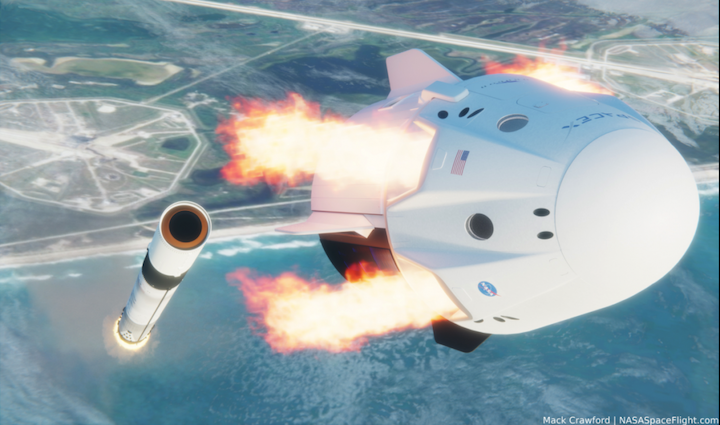23.05.2020

t’s a cliché statement to say Demo-2 will usher in a new era for human space exploration. That much is certain.
But with each new crew launch vehicle comes the inevitable question: how will Crew Dragon actually perform a launch abort and how will it aim itself to predetermined locations in the Atlantic Ocean stretching from the Kennedy Space Center across to the western Irish coast?
Crew Dragon has eight abort modes for Demo-2, one on the pad and seven in-flight.
The modes will likely be refined as flight experience is gained, but it is not expected at this time that the various abort modes will change significantly on future Crew Dragon missions to the Station unless an issue is identified that needs to be corrected.
After Bob Behnken and Doug Hurley board Crew Dragon, the hatch will be closed and the vehicle prepared for fueling.
Unlike all previous U.S. orbital human space missions, the Falcon 9 will be loaded with propellant after Bob and Doug are onboard. This necessitates pulling the crew access arm back at T-42 minutes and activating Crew Dragon’s launch abort system at T-38 minutes.
Fueling will begin at T-35 minutes, at which point Crew Dragon’s SuperDraco abort engines will be standing by to quickly pull the craft and crew away from the Falcon 9 should the unlikely need to do so arise.
This pad abort would result in Crew Dragon landing east of the launch site in the Atlantic Ocean just offshore.
Once liftoff occurs, the abort landing locations change with every passing second of flight, ultimately resulting in Crew Dragon requiring a potential landing off the western coast of Ireland.
To determine abort landing weather for Shuttle, teams only had to look at specific sites, and only one abort landing location had to be acceptable for the Shuttle to launch.
But Crew Dragon won’t land on a runway; it will splashdown in the Atlantic Ocean if an in-flight abort ever occurs. And NASA has revealed that 50 predetermined abort landing locations will be monitored for the Demo-2 launch, with each of the 50 locations corresponding to one of the seven in-flight abort modes for Dragon.
A certain, undisclosed percentage of abort landing locations in each abort zone will need to be “go” for landing/recovery weather to commit to launch on Wednesday, 27 May during the single-second 16:33:31 EDT (20:33:31 UTC) launch opportunity.
